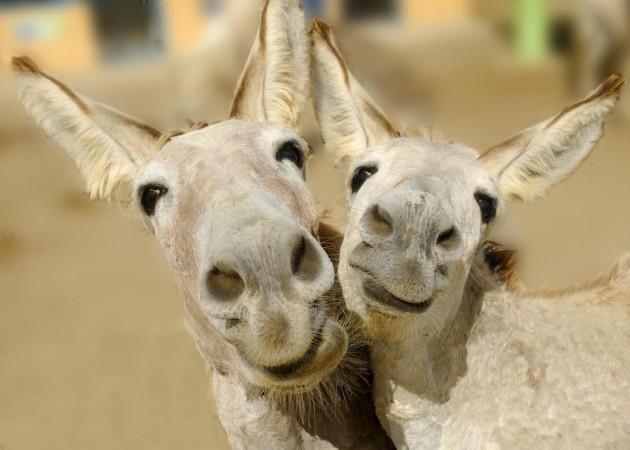The Zoo That Made Itself Look Like a Donkey
For years, Antosia and Napoleon were the best of all couples. They were together for a decade, bringing six children into the world. They rarely complained about anything in life, despite not even having a roof over their heads. As seen below (via the International Business Times), they were happy, so long as they were together.

Oh, yeah, and they are donkeys. Antosia and Napoleon live at the Old Zoo in Poznan, Poland. And for a brief moment, their relationship was the biggest scandal to hit the zoo in years, perhaps since its founding in 1874. The problem? The donkeys’ lack of humility.
Antosia and Napoleon, as noted above, have six kids together. And that doesn’t happen by accident; for donkeys to procreate, they need to be intimate with one another. And unlike people, donkeys do not have any compunction about having sex in public during the middle of the day for all the world to see. Had the donkeys lived on a farm or in the wild, maybe no one would notice or care. But Antosia and Napoleon live in the zoo, as we established, and lots of families visit the zoo. Sometimes, those families have young children with them, and sometimes, those children say “mommy! daddy! what is that donkey doing to that other donkey!” That’s not a fun question for a parent to have to tackle, and some of those parents complained.
Those complaints are kind of silly — it’s a zoo, they’re donkeys, and just tell your kids they’re wrestling or something! — but in this case, a local politician decided to get involved. As the Guardian reported, in the fall of 2014, “Lydia Dudziak, took up their cause and persuaded the director of the zoo in Poznan to have the animals put in separate pens.” Antosia and Napoleon were in adjacent enclosures, separated from one another for the first time in a decade.
The Poznan community erupted with laughter and derision toward the decision. Within days, petitions to reunite the donkey lovers flew through the Internet, gaining more than 7,000 signers. Facebook pages demanding the same drew thousands of followers. The story went national. Per the Guardian, “Experts weighed in, saying that forcing the donkeys to live alone could affect their psychological well-being. Politicians were asked about it on the country’s leading news programs.” And almost no one — not even members of Dudziak’s own party — supported the decision to keep Antosia and Napoleon apart. As the Associated Press reported, a spokesperson for her party disavowed the move, saying that “a level of absurdity … has been crossed to such an extent that I don’t even want to read or know about this.”
On September 25, 2014, the two beasts of burden were reunited. Per the AP, the zoo backtracked, telling the press that “it was never our intention for any animals to feel uncomfortable because of their natural behaviors.”
Bonus fact: The Spanish word for “donkey” is “burro,” and therefore, a “burrito” is a “little donkey.” So how did a wrap filled with all sorts of yummy goodness get named after donkeys? That’s not entirely clear, but a leading theory is that they serve similar purposes, as the San Francisco Chronicle reports: “The burrito originally came from northern Mexico, a wheat-producing area where flour tortillas are common. It was created as a portable meal for ranchers and miners. ‘The burrito is named after the burros, which were known to be able to carry everything,’ says David Thomsen, co-author of ‘Burrito! Hot on the Trail of the Little Burro’ with Derek Wilson. ‘These were like the little burros because they carried all these ingredients.'”
From the Archives: Why the Zebra Got Its Stripes: The bonus item is about donkeys, kind of.
